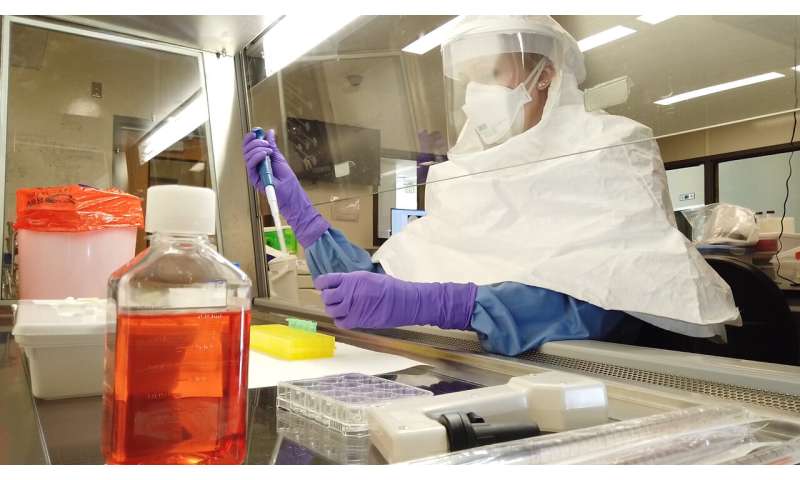
Scientists do not yet know if Severe Acute Respiratory Syndrome Coronavirus 2, or SARS-CoV-2—the virus that causes COVID-19—can be transmitted by blood transfusion. But given the unknowns around this new pathogen, researchers at Colorado State University used existing technologies to show that exposing the coronavirus to riboflavin and ultraviolet light reduces pathogens in human plasma and whole-blood products.
The study, “Pathogen reduction of SARS-CoV-2 virus in plasma and whole blood using riboflavin and UV light,” was published May 29 in PLOS ONE.
Dr. Izabela Ragan, postdoctoral fellow in the Department of Biomedical Sciences at CSU, said the research team tackled one of the big questions about the novel coronavirus: If the pathogen can spread through blood or by donating blood, would it be possible to kill the virus?
“The research we conducted answers that question: yes, you can,” said Ragan. “We eliminated a huge amount of virus and we could not detect the virus post-treatment.”
The research team used the Mirasol Pathogen Reduction Technology System to treat nine plasma and three whole-blood products for the study.
The technology—which is owned by medical device company Terumo BCT—was invented by Ray Goodrich, senior author of the study and executive director of the Infectious Disease Research Center at CSU. He is also a professor in the Department of Microbiology, Immunology and Pathology.
Simple process
Dr. Heather Pidcoke, a co-author on the study and chief medical research officer at CSU, said the process used by the research team is quite simple.
The blood product or plasma is placed in a specially designed storage bag, riboflavin solution is added, and the mixture is then exposed to UV light. The Mirasol PRT device gently shakes the bag to circulate the blood cells, so the cells come to the surface where they are exposed to the UV light.
The authors caution that this is not an experiment to try at home. The light does not penetrate the entire bag, so it’s not the same as exposing body parts to UV light.
Goodrich said the research may help to avoid what happened in the 1980s, when HIV was transmitted through blood and blood products while scientists were still trying to isolate and identify what might be causing the spread of the virus. However, he noted that the Mirasol system is currently only approved for use outside of the United States, mainly in Europe, the Middle East and Africa.
“Our research may help inform people outside the U.S who are using it,” he said. “They may breathe a sigh of relief knowing that while we continue to study this, there is some potential mitigation in place just in case.”
Studying transmission question
CSU researchers are currently studying whether SARS-CoV-2 is transmitted by blood. Ragan said they hope to answer that question very soon.
Colorado State University

